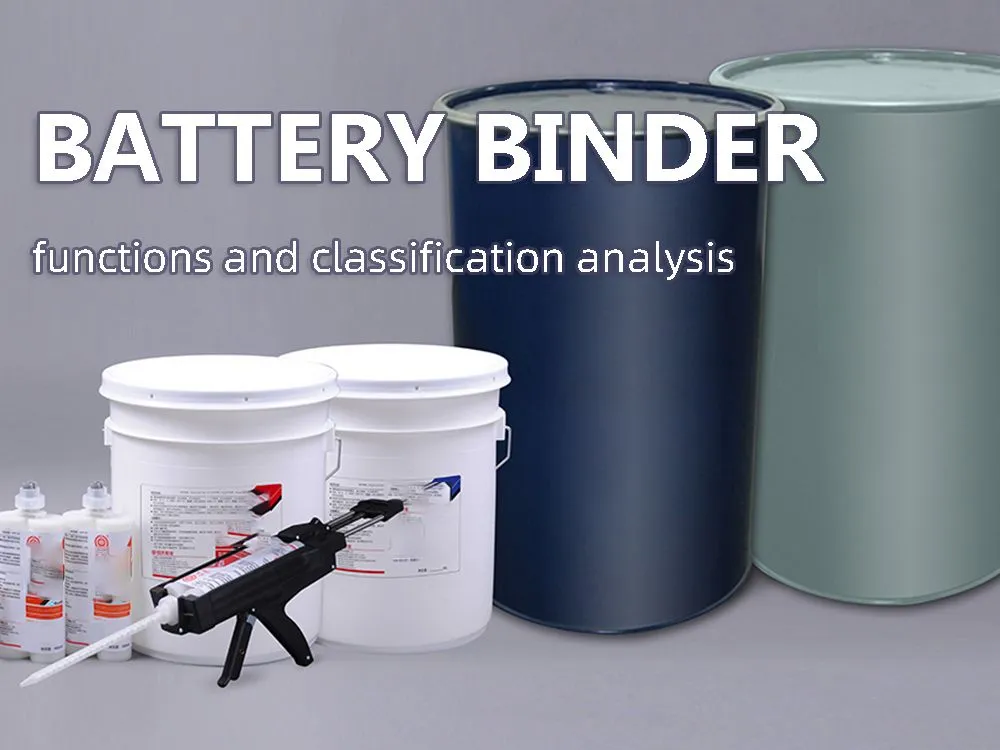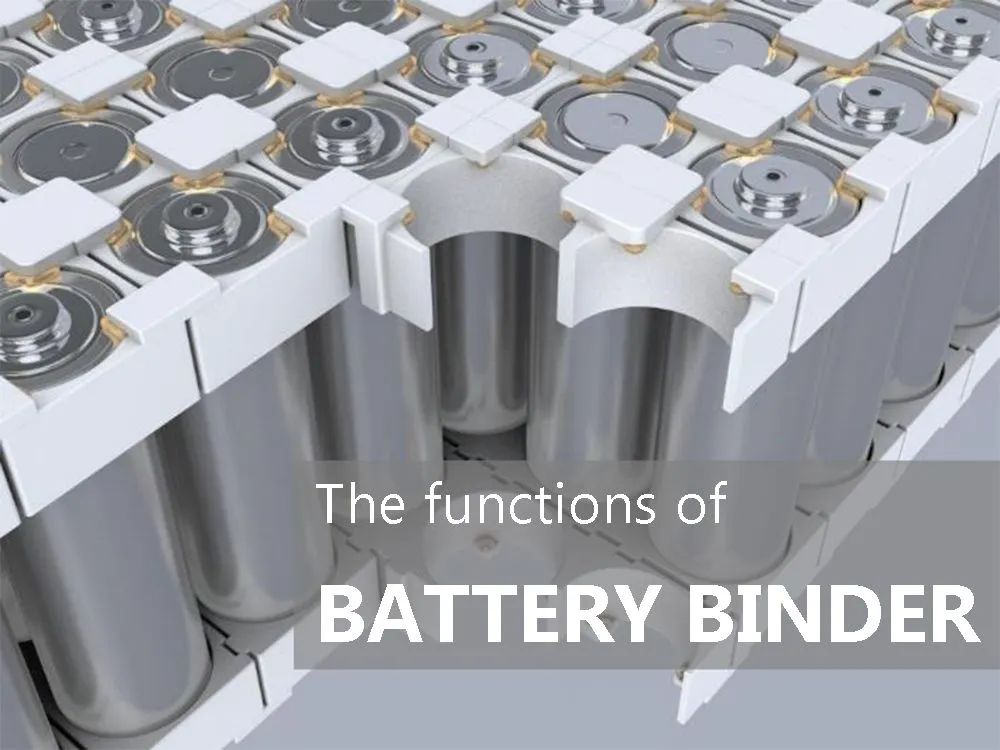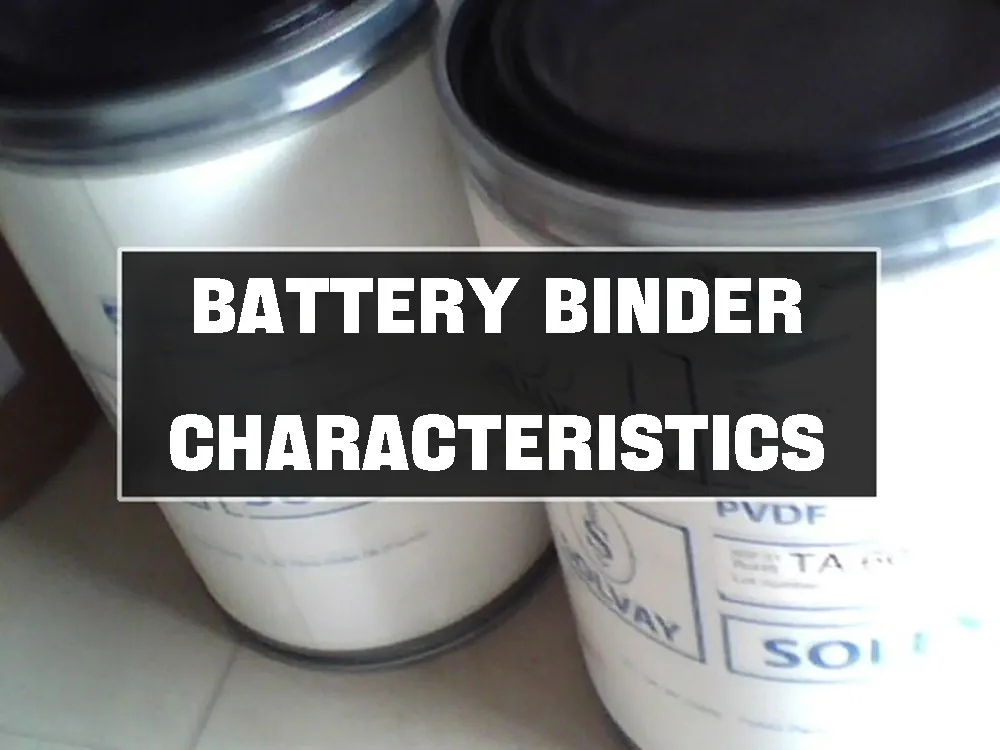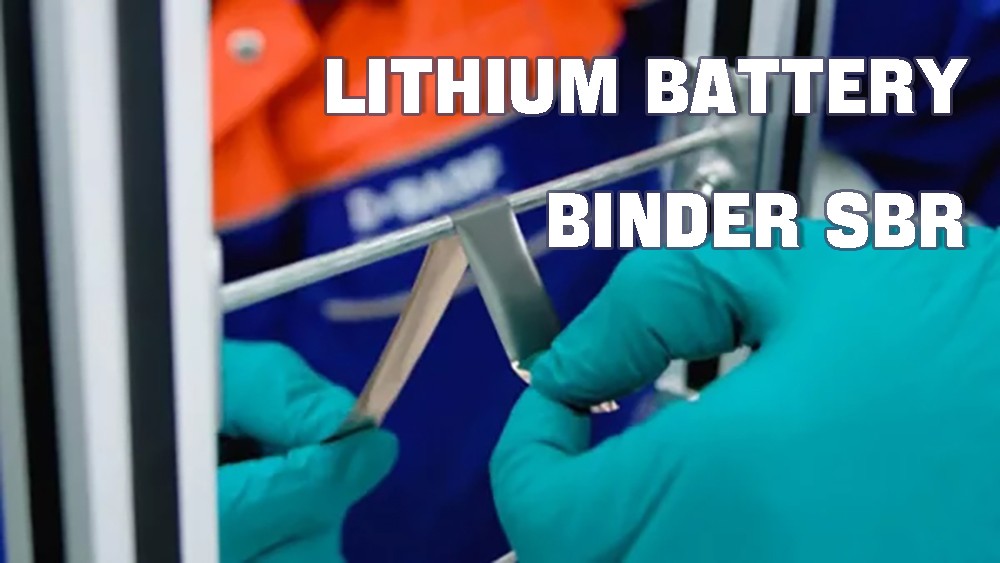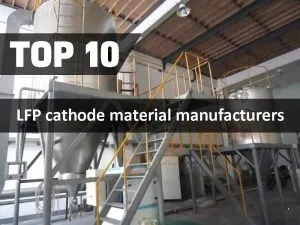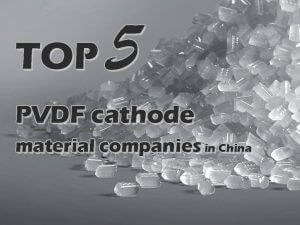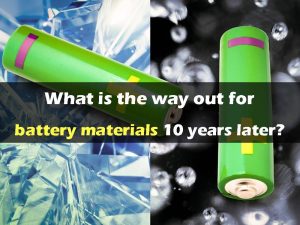Battery binder functions and classification analysis
Lithium-ion battery electrodes are usually composed of battery binder and active materials. At the same time, the micropores inside the electrodes are filled with electrolytes. The structure of the electrodes plays an important role in electron conduction and ion transport. Battery binder is a key auxiliary material of lithium battery. As an indispensable part of lithium-ion batteries, its dosage accounts for 5% to 8% of the cathode and anode active materials. Battery binder properties have a great influence on the normal production and final performance of lithium-ion batteries.
Many studies have shown that many electrochemical properties of lithium-ion batteries are closely related to the properties of battery binder, and the application of high-performance battery binder is an important development direction for optimizing the lithium-ion battery performance.
The functions of battery binder
The vast majority of active materials use powder materials, so battery binder is an essential key material in the preparation of electrodes, and battery binder has three main functions:
● The battery binder binds the various components of the pole piece, such as active materials, conductive agents, current collectors, etc., to form a stable pole piece structure. At the same time, the active material and the conductive agent can be better contacted to form a good conductive network;
● The battery binder can also relieve the volume expansion and shrinkage of the cathode and anode materials during the process of lithium intercalation and deintercalation, and stabilize the internal structure of the pole piece to obtain good cycle performance;
● During the production process, the battery binder is dissolved in a solvent to form a colloidal solution. During batching, the active material and conductive agent can be well suspended in the colloidal solution to form a well-dispersed and non-settling slurry for subsequent coating.
Application requirements of battery binder
The battery binder not only needs to effectively bond electrode active materials, conductive agents and electrode collectors, but also has the ability to resist various external factors because it has been in a very special environment for a long time. These special environmental factors are:
● The battery binder and the electrode material are soaked in the electrolyte for a long time, and the binder needs to be stable in shape, structure and property in the electrolyte;
● Under the conditions of high potential (cathode binder) or low potential (anode binder) for a long time, therefore, the cathode binder needs not to be oxidized under high pressure conditions, and the anode binder needs not to be reduced under low pressure conditions ;
● Many lithium-storage active materials will continue to undergo volume changes during battery operation, and their volume will increase with the insertion of lithium ions and decrease with the extraction of lithium ions. Therefore, the battery binder must have sufficient flexibility to ensure that the active material does not fall off during repeated expansion and contraction, and the bond between the electrode particles is not damaged.
Therefore, battery binder usually needs to have the following characteristics:
● Good bonding performance, high tensile strength, good flexibility, low Young’s modulus;
● Good chemical stability and electrochemical stability, no reaction and no deterioration during storage and circulation;
● No swelling or small swelling coefficient in the electrolyte;
● Good dispersion in the slurry medium, which is conducive to uniformly bonding the active material to the current collector;
● Little influence on the conduction of electrons and ions in the electrode;
● Environmentally friendly, safe to use, and low in cost.
The ratio of the battery binder used must be an appropriate value, and the pole piece with too little binder is prone to powder drop, peeling and active material falling off. And because the bonding effect is not good, the ohmic resistance of the pole piece becomes larger, and the electrical performance of the battery will be affected.
Although too much binder ensures the bonding performance of the pole piece, the electrochemical inertness of the battery binder will inevitably increase the ohmic resistance of the pole piece, and the increase in the internal resistance of the battery will also affect its electrical performance.
Classification of battery binder
The battery binder can be divided into oil-based battery binder and water-based battery binder according to the different solvents used. Of course, some binders can be dissolved in both organic solvents and deionized, such as PAA.
Oil-based battery binder
The oil-based battery binder refers to the use of organic matter as the solvent as the binder, and the corresponding slurry formed is an oil-based slurry. Each component of the slurry formed by this system has good dispersibility and is not easy to settle, and the electrode sheet has good bonding performance.
● PVDF
At present, the oil-based battery binder commonly used in lithium top 100 industrialization manufacturers is polyvinylidene fluoride (PVDF), and the oily solvent used in conjunction with it is N-methylpyrrolidone (NMP). PVDF is a chain polymer, its molecular weight is generally greater than 300,000, and it is an insulator. The bonding mechanism is to form hydrogen bonds through the F atoms on the long chain and other component particles in the pole piece, and the effect of hydrogen bonds makes each component particle string together.
In PVDF battery binder modification, blending modification is simple and effective. Generally, another polymer is mixed with PVDF to obtain a battery binder with better performance. The modified battery binder after blending generally shows that the crystallization of PVDF is appropriately reduced, the composite electrode is more compatible with the electrolyte, the lithium ion transmission is accelerated, and the battery performance is improved.
● Other oil-based binders
In addition to the commonly used PVDF battery binder, other oil-soluble binders have also received a lot of attention through their unique advantages. Non-PVDF oily binders mainly include: polyacrylonitrile (PAN), polyimide (PI), perfluorosulfonic acid ionomer (Nafion).
PAN is a semi-crystalline polymer, and its main functional group, the nitrile group, has strong polarity, and generally connects active materials and current collectors through hydrogen bonds, van der Waals forces, and permanent dipole-dipole interactions. At the same time, PAN can well infiltrate the electrolyte, and the strong polarity of the nitrile group can also promote the movement of lithium ions in the electrode.
PI-based battery binder generally has good mechanical properties and heat resistance, and are often used in large-volume expansion silicon anodes and high-voltage layered cathode materials.
Nafion has excellent ionic conductivity and suitable bonding strength. The sulfonic acid group on Nafion can generate electrostatic interaction with Li+ in the electrolyte, so that Li+ can creep and migrate on the polymer main chain, improving the ionic conductivity of the electrode.
Water-based battery binder
In order to overcome the problems of environmental pollution and high cost of use of oily battery binder, water-soluble battery binder has been gradually developed, and have become a direction that battery workers have generally paid attention to in recent years. Water-based battery binder widely used in industrial lithium-ion batteries include sodium carboxymethylcellulose (CMC) combined with styrene-butadiene rubber (SBR), polyacrylate (LA series) binders, etc.
● CMC
The preparation of CMC is formed by embedding carboxymethyl functional groups into natural cellulose. Due to the presence of carboxymethyl functional groups in CMC, it is soluble in water. When CMC is used as a carbon negative electrode binder for lithium-ion batteries, the amount used is relatively small, generally between 2% and 5%.
The electrode made with this binder has a small loss in the first irreversible capacity and a high reversible capacity. Some companies have applied CMC in the manufacture of lithium-ion negative electrodes, but CMC is brittle and has poor flexibility.
● SBR
When SBR is used as a battery binder, it has good elasticity and high elongation, and is mainly used to increase the flexibility of the electrode sheet. In industry, SBR is mostly used in combination with CMC. The mechanical properties of polymer films with different CMC/SBR ratios are shown in the figure below. It can be seen that SBR effectively reduces the Young’s modulus of the film and increases the flexibility of the film.
● LA series
Polyacrylate latex has good adhesion to current collectors, which is conducive to improving the capacity of electrodes, and has been used in some applications in recent years. The first reversible specific capacity and cycle performance of the nano-SnO2 pole piece fabricated in this way are improved compared with the use of PVDF battery binder.
The disadvantage of this type of battery binder is its high brittleness in dry conditions. During the pulping process, the active material is prone to agglomeration and has poor dispersion. It may be that the stability of the binder makes the long-term cycle performance of the electrode sheet made of this battery binder poor.
● PAA
PAA as a battery binder has the following advantages:
● There is almost no swelling in the carbonate solvent of the electrolyte, and the structure of the electrode sheet is stable during the charge and discharge process;
● The carboxyl group content in its structure is higher than that of CMC, which can form a strong hydrogen bond with active material materials (such as silicon anode materials) containing hydroxyl groups on the surface, and promote the formation of a more uniform coating on the electrode surface than CMC ;
● It can form a relatively dense film in the electrode sheet, increasing the electrical contact between the active material and the current collector;
Excellent tensile mechanical strength, which is conducive to machining.

